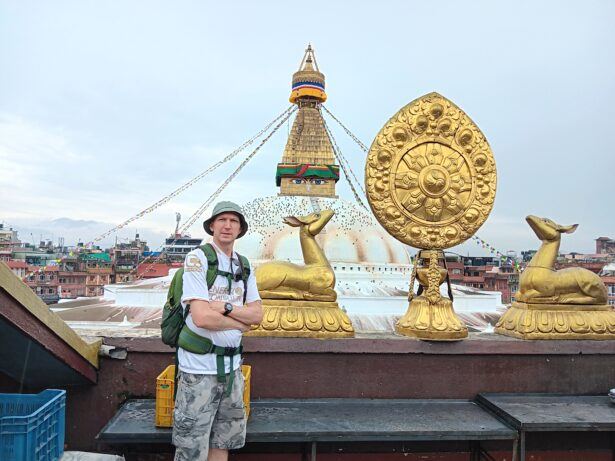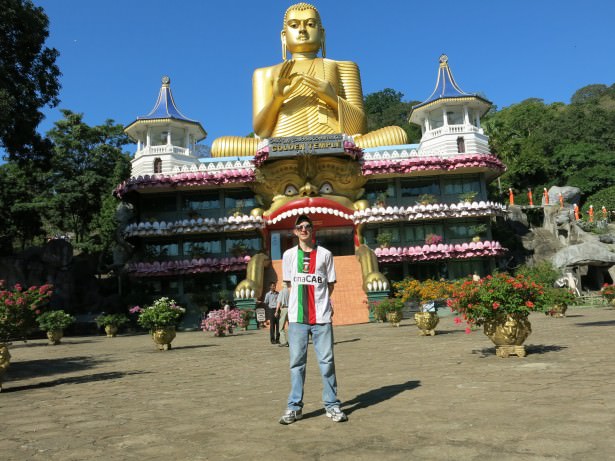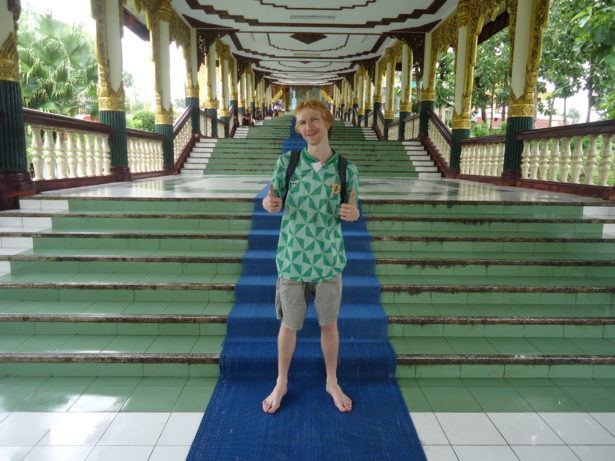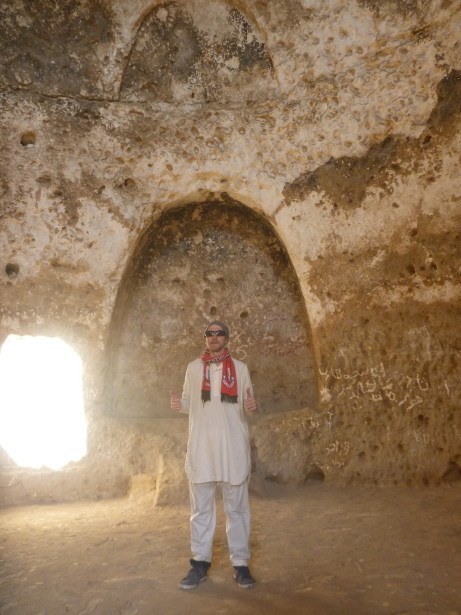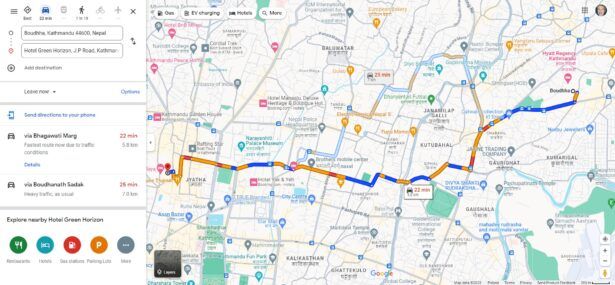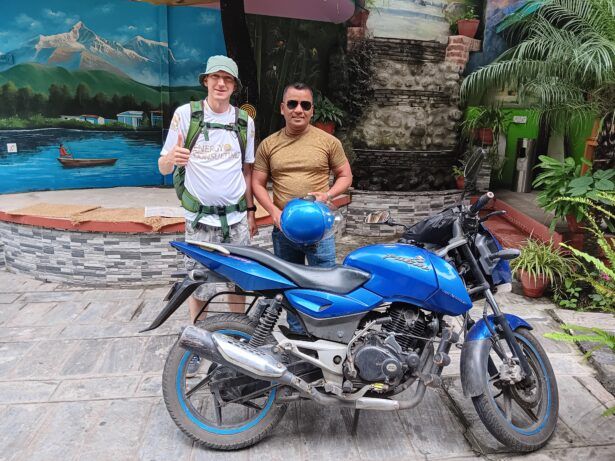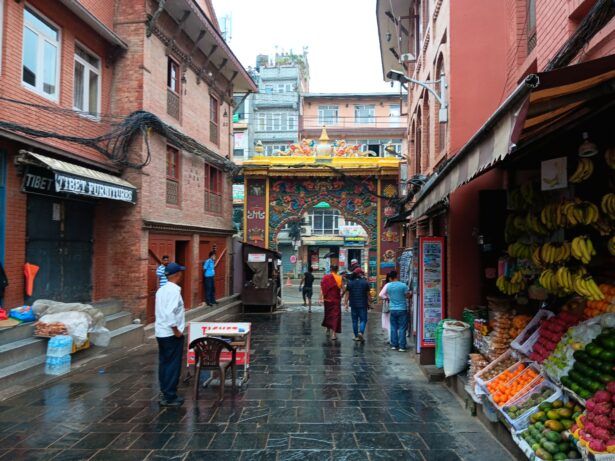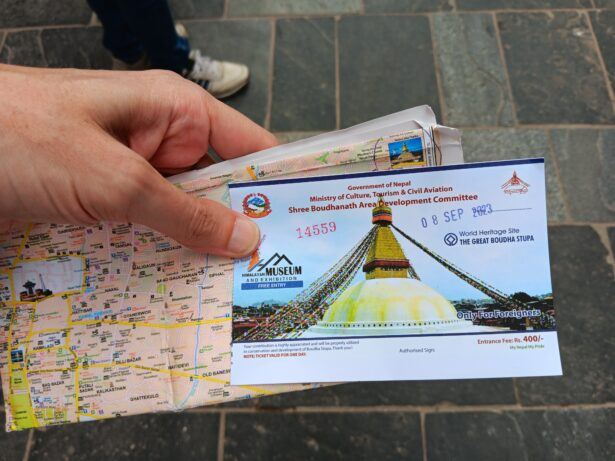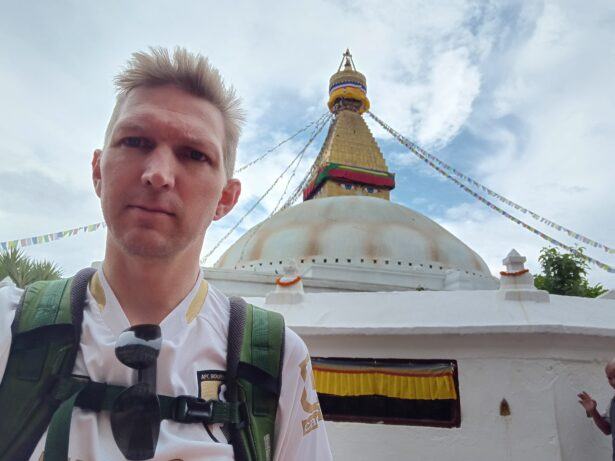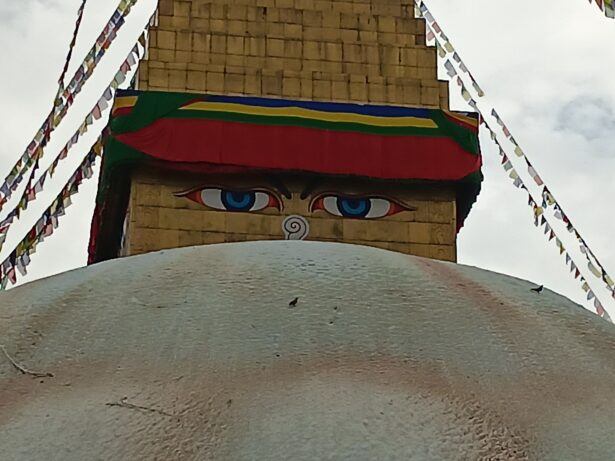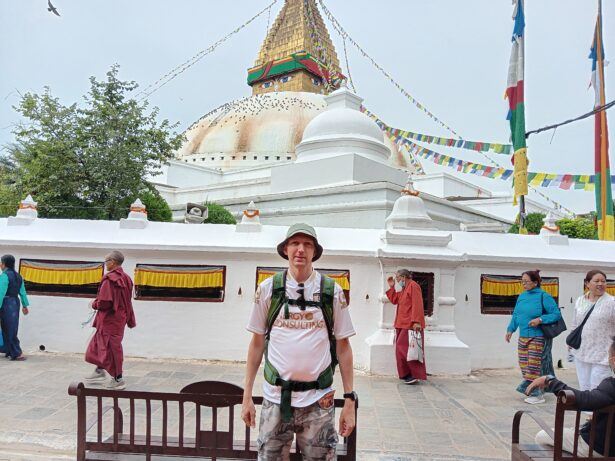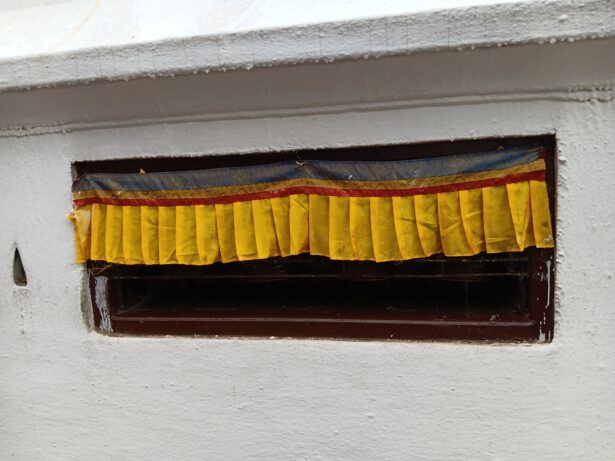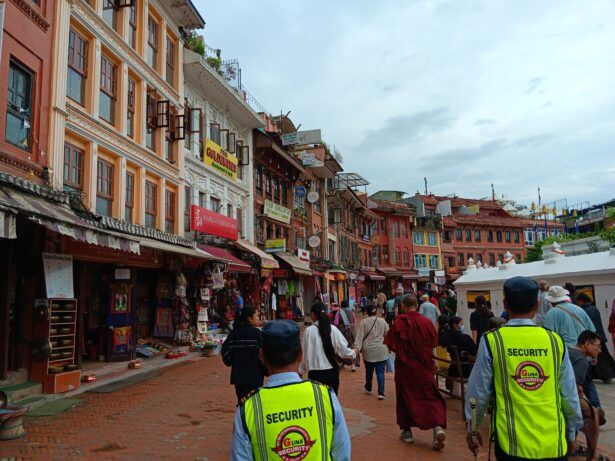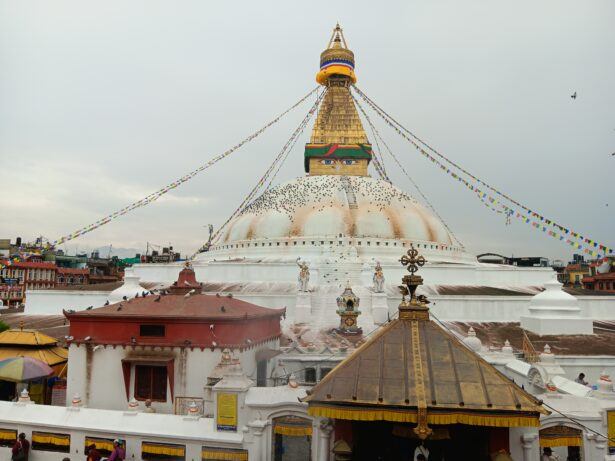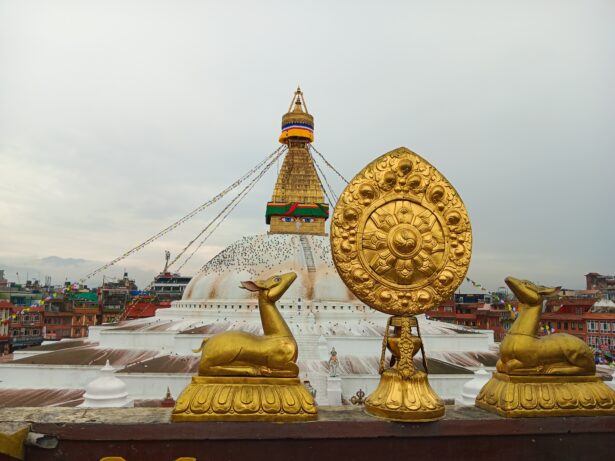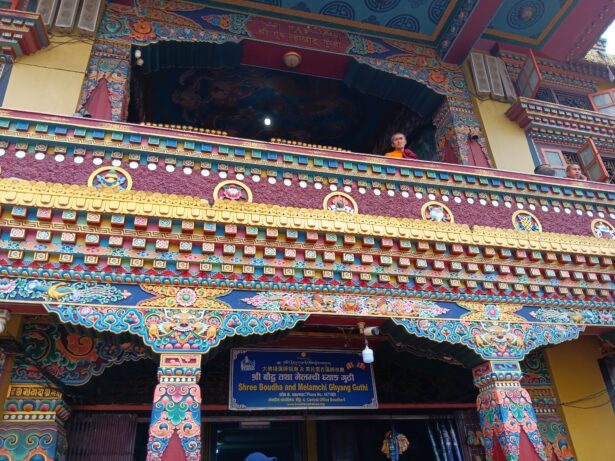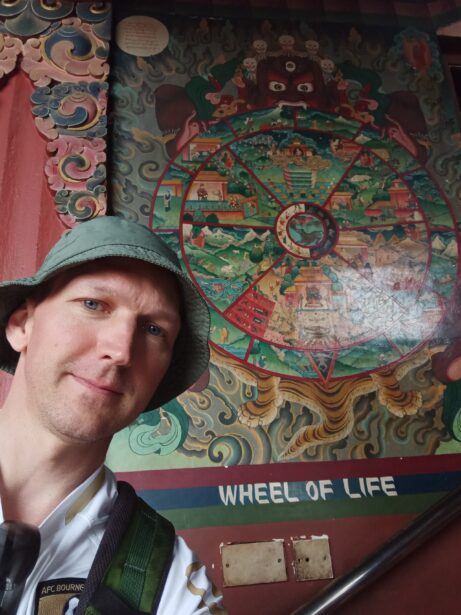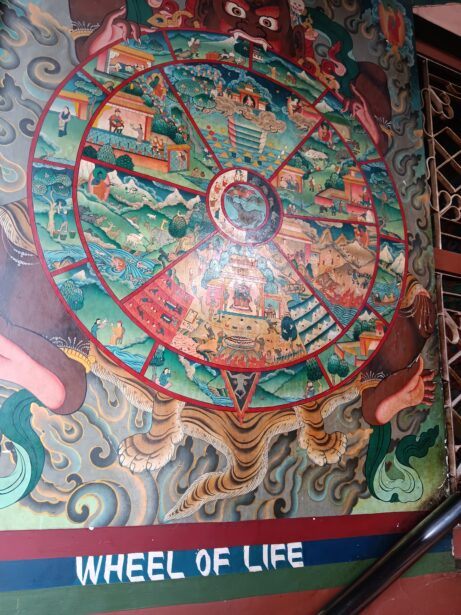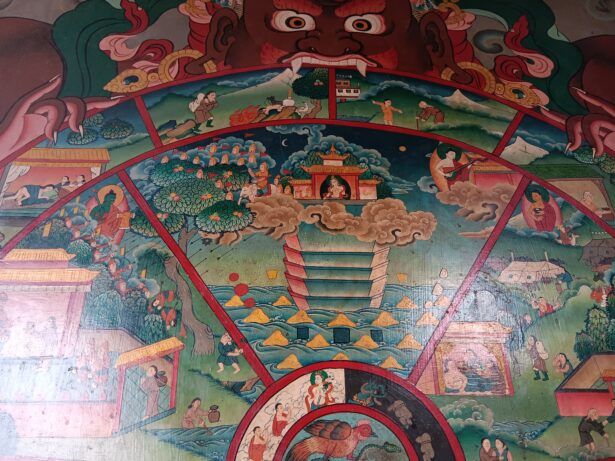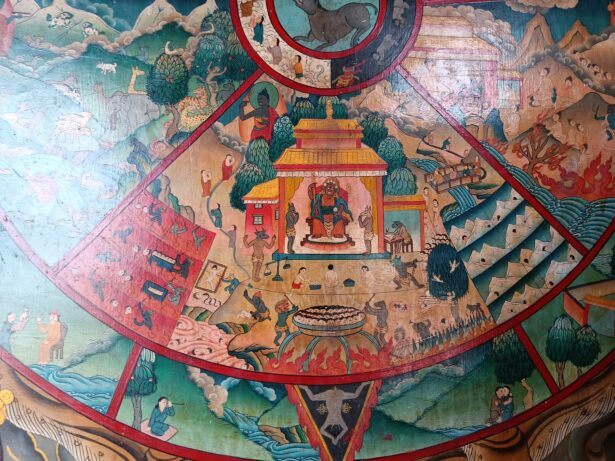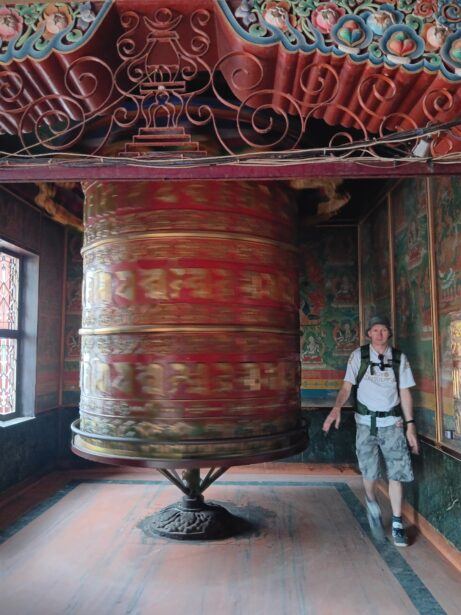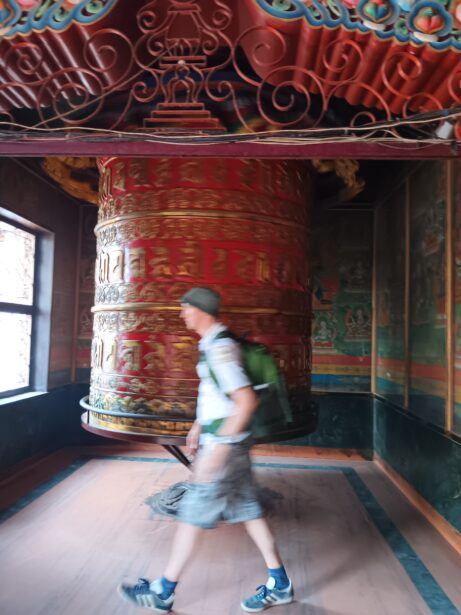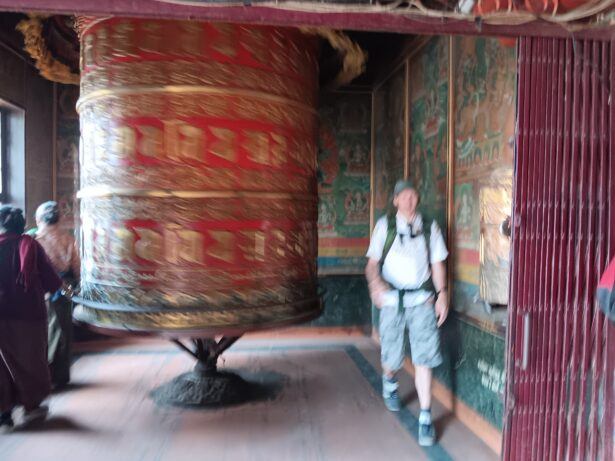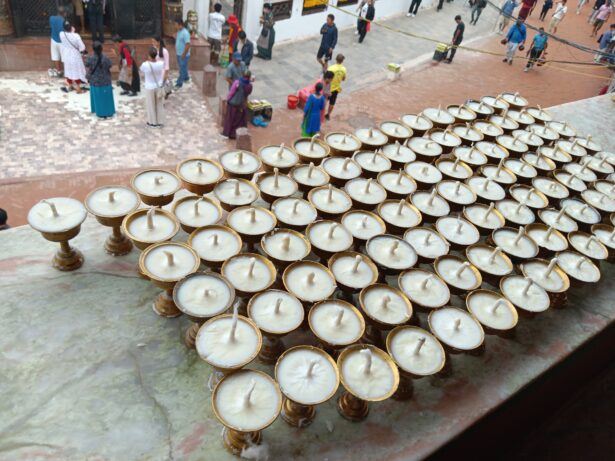“My spirit has been purified” – Noel Gallagher.
I enjoyed a ram packed, action whacked brace of days in Nepal’s capital city, Kathmandu. It was actually a city that didn’t surprise me at all. I expected it to be like this. Poky streets, friendly people, temples galore and a load of shops selling hiking gear. I was kind of ready for what this man could do, by the time, in 2023 when I finally backpacked in Kathmandu, Nepal. One of the main sights is this holy Buddhist shrine known as The Boudhanath Stupa, which is a UNESCO listed World Heritage Site. So it was on my list of places to see and I organised a brilliant tour with Nepal Mountain Trekkers while based at the Hotel Green Horizon. On that tour, I also visited Patan and the Pashupatinath Hindu Temple Complex. Buddhism has intertwined its way into my life at various points, from the glory days backpacking Changhua in Taiwan to Kurunegala in Sri Lanka to the Buddha monastery in Afghanistan to the Marble Buddhas of Myanmar.
Getting To The Boudhanath Stupa And Shrine, Kathmandu
The Boudhanath Stupa is located on the east of Kathmandu, around 20 – 30 minutes drive from the city centre. Most tourists will be based in the central part, or in the nearby city of Patan. I was staying at the Hotel Green Horizon in downtown Kathmandu and the journey out to the Boudhanath Stupa is very straightforward and obvious. Here’s the map of the route.
From my hotel, I was able to organise a tour of Kathmandu City, as well as to these sights such as the Boudhanath Stupa, The Monkey Temple, Pashupatinath Temple and Patan Old Town. The tour company I used is called Nepal Mountain Trekkers and there are full details below. Don’t be fooled by the name though. Of course they specialise in the mountain trekking which is standard in Nepal, but city tours and the Buddhism and Hinduism history are also their forte. My guide and driver (on a motorbike) was Minh. We motorbiked it to the Boudhanath Stupa.
Tickets For The Boudhanath Stupa And Shrine, Kathmandu
Supposedly, you actually need a ticket, though things like this get a bit weird in Nepal. There is no actual gate or entrance so really you don’t need the ticket, honestly, there are some people who check it but when it is busy and hundreds walk past, there is no way they can stop everyone to check. It gets a bit weird in honesty. I mean, you cannot charge people money to walk down a street, nor should you have to pay for religion. Plus, if you go there early, or late, there are actually no ticket booths open, so you couldn’t even buy a ticket at those times, so it’s a weird one.
However, despite all that, I actually did buy a ticket!! Perhaps the idea of Karma in a Holy Buddhist Shrine over-rode the desire to nab a textbook freebie? Who knows!? I was here around 9.00 a.m. and there was a ticket booth open, but you have to go yourself and get the ticket and I did. My guide waited for me and he – didn’t need a ticket! The ticket was 400 Nepalese Rupees – that is around £2.50 in Northern Irish pounds, and just over $3 US Dollars. They stamp your ticket. I had a map already with me, but as well as the ticket you get a leaflet which is a full guide to the Stupa here.
The Main Boudhanath Stupa
Right in the centre in a circle, on the street sits the main Boudhanath Supa. It has a white sloped dome with golden spire and piercing eyes towards the top. Despite what you might think, you cannot actually go inside! Only on special occasions, do they open it and let you inside. So you will be admiring it by walking around it!
There is a lot of fascinating history here and that is the reason why this is UNESCO listed and is an important Buddhist Stupa. Firstly, it is rumoured to have been built on Kashyap, the Primordial Buddha’s relics. It is also the biggest Buddhist Stupa in the world – a stat I found staggering and didn’t believe it – I was sure I had seen bigger before!
The Boudhanath Stupa is also known as Chintaamani, a jewel which fulfils wishes and if you read on, you will know that I made a wish here in this spiritual place. The Boudhanath Stupa is depicted as the Buddha’s Chitta, which represents eternal conscience.
“This time, I feel my luck could change” – Radiohead.
The exact date this was originally built, or when it began as a Stupa is unclear. The Gopālarājavaṃśāvalī (Chronology of the rulers of the Kathmandu Valley) claims Boudhanath was founded by the Nepalese Licchavi king Śivadeva (c. 590–604 CE); though other Nepalese chronicles date it to the reign of King Mānadeva (464–505 CE). It’s still unclear, but it’s probably 1,500 years old.
Tibetan sources claim a mound on the site was excavated in the late 15th or early 16th century and the bones of King Aṃshuvarmā 605–621 were discovered there. Don’t worry too much about researching history – live in the present and dander into the Guru Lhakhang Monastery, which is on the left as you enter the Stupa street.
The Guru Lhakhang Monastery
Within the area of the Boudhanath Stupa, there are almost forty monasteries! This is a staggering number, and you won’t see them all. Some are small and hidden and hardly any are visible nearby. However, there are four of these traditional Buddhist Monasteries surrounding the Boudhanath Stupa, and you should go into the Guru Lhakhang Monastery to make the wish, to feel purified, to spin the wheel.
Spinning The Wheel At The Guru Lhakhang Monastery At The Boudhanath Stupa And Buddhist Shrine, Kathmandu
On my journeys, I often partake in spontaneous things that I didn’t know about beforehand. Some of these have been related to fate, chance, luck, magic, clairvoyance and not all of those have I taken time to write about yet. I didn’t get my fortune told in 2001 at the Forks in Winnipeg, Canada when I had the chance. From that moment, I regretted it. Since then, I got my fortune told and made holy wishes in Togo, Myanmar, Uzbekistan, Republic of Ireland, Poland and Turkey. Here, in the Boudhanath Buddhist Shrine, it was time to check out the wheel. The spinning wheel. The wheel of life, and death. This was my time for spirituality.
“You do the walk. Yeah you do the walk of life” – Dire Straits.
You walk clockwise around the spinning wheel, and you make a wish. I did this in Uzbekistan in February 2016 and four days later, the wish came true. A wish I made at Blarney Castle in June 2016 also came true before fading out and causing chaos. I am still sceptical about such wishes and lucky charms, but this one had to be done.
“Take a thorn from my pride and hand in hand we’ll take a walk outside” – Noel Gallagher.
Round the wheel, I went, filmed and photographed by my guide Minh.
“The circle of life” – Elton John.
A spiritual feel is evident in the air here, I felt it and often I don’t know why. Buddhism is a faith that believes very much in karma, helping others means you’ll get that help back. I’ve always felt a bit like that. Somewhere between a forgiving Catholic, after all those mistakes and a constantly strong Buddhist, you’ll find me one day.
“A soul in pain has no image to reclaim” – Manic Street Preachers.
Moments later, we completed the circle of walking all the way round the stupa as I stared at the sky’s newfound rain, and said goodbye to the holy Boudhanath Stupa. At least for this lifetime, I know I won’t be back here. However, I felt that this was a significant moment on my sphere.
How to organise a tour to The Boudhanath Stupa with Nepal Mountain Trekkers:
https://www.nepalmountaintrekkers.com/
https://www.nmtrekkers.com/
https://www.linkedin.com/in/nepalmountaintrekkers/
https://twitter.com/trekkersnepal
https://www.instagram.com/nepalmountaintrekkers/
https://www.facebook.com/nepalmountaintrekkers
https://www.youtube.com/channel/UCDhvVOTYGunR2ZstALouAuA
https://www.tripadvisor.com/Attraction_Review-g293890-d8660938-Reviews-Nepal_Mountain_Trekkers_Day_Tours-Kathmandu_Kathmandu_Valley_Bagmati_Zone_Central.html

- P.O. Box:19891, Pyramid Galli, JP Street, Thamel, Kathmandu, Nepal
- +9779851276377, 977 01 5348594
- info@nepalmountaintrekkers.com
- nmtrekkers
- 977-9841657877
Here are some videos I made during my tour of The Boudhanath Stupa And Buddhist Shrine, Kathmandu:

 : Visiting The Boudhanath Stupa And Buddhist Shrine, Kathmandu
: Visiting The Boudhanath Stupa And Buddhist Shrine, Kathmandu